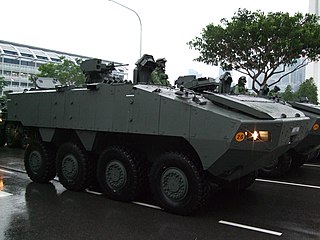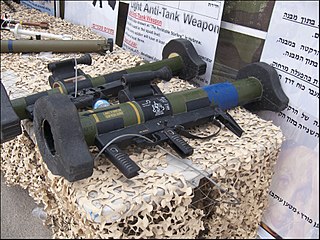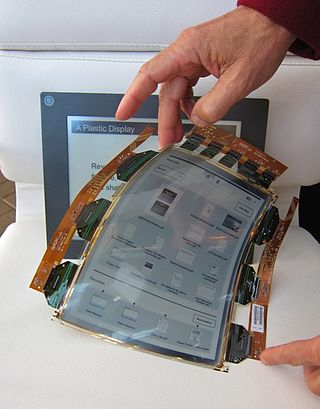
An intelligent transportation system (ITS) is an advanced application which aims to provide innovative services relating to different modes of transport and traffic management and enable users to be better informed and make safer, more coordinated, and 'smarter' use of transport networks.

A smartphone is a mobile device that combines the functionality of a traditional mobile phone with advanced computing capabilities. It typically has a touchscreen interface, allowing users to access a wide range of applications and services, such as web browsing, email, and social media, as well as multimedia playback and streaming. Smartphones also have built-in cameras, GPS navigation, and support for various communication methods, including voice calls, text messaging, and internet-based messaging apps.

Kyocera Corporation is a Japanese multinational ceramics and electronics manufacturer headquartered in Kyoto, Japan. It was founded as Kyoto Ceramic Company, Limited in 1959 by Kazuo Inamori and renamed in 1982. It manufactures industrial ceramics, solar power generating systems, telecommunications equipment, office document imaging equipment, electronic components, semiconductor packages, cutting tools, and components for medical and dental implant systems.

Land Warrior was a United States Army program, launched in 1994, cancelled in 2007 but restarted in 2008, that used a combination of commercial, off-the-shelf technology (COTS) and current-issue military gear and equipment designed to:

The Terrex Infantry Carrier Vehicle (ICV) is an armoured fighting vehicle (AFV) developed by ST Engineering of Singapore and Timoney Technology of Ireland, and produced by ST Engineering Land Systems for the Singapore Army as well as by Turkish auto-maker Otokar as the Yavuz (AV-82) for the Turkish military.

The Singapore Self-Propelled Howitzer 1 Primus is a self-propelled howitzer armed with a 155 mm howitzer. Developed jointly by the Singapore Armed Forces (SAF), Defence Science and Technology Agency (DSTA) and Singapore Technologies Kinetics, it was officially inducted to the Singapore Artillery in 2004. Primus is derived from the Artillery motto In Oriente Primus.

The MATADOR is a 90-millimetre (3.5 in) man-portable, disposable anti-armour and anti-brickwall weapon system developed by Germany, Israel and Singapore. It is an updated version of the German Armbrust design, and operates on the same principles. The development of this weapon began in 2000 and the MATADOR will eventually replace the German Armbrust Light Anti-tank Weapon, which has been in service since the 1980s.

The Bionix (BX) is a family of tracked Singaporean armoured fighting vehicles developed by ST Kinetics. Intended to augment the Singapore Army's aging M113 armoured personnel carriers, it is the first indigenous armoured vehicle to be developed in Southeast Asia. The Bionix has been operational with the Singapore Armed Forces (SAF) since 1999 in a wide variety of adaptations including the Bionix II, Bionix 25 and Bionix 40/50 variants.
A rugged computer or ruggedized computer is a computer specifically designed to operate reliably in harsh usage environments and conditions, such as strong vibrations, extreme temperatures and wet or dusty conditions. They are designed from inception for the type of rough use typified by these conditions, not just in the external housing but in the internal components and cooling arrangements as well.
Singapore Technologies Engineering Ltd, doing business as ST Engineering, is a Singaporean multinational technology and engineering group in the aerospace, smart city as well as defence and public security sectors. Headquartered in Singapore, the group reported a revenue of S$7.7 billion in FY2021, ranks among the largest companies listed on the Singapore Exchange, and is one of Asia's largest defence and engineering groups. It is a component stock of FTSE Straits Times Index, MSCI Singapore, iEdge SG ESG Transparency Index and iEdge SG ESG Leaders Index. ST Engineering has about 23,000 employees worldwide with two-thirds of its employees in the engineering and technology roles.
ST Engineering Land Systems Ltd (STELS), formerly known as ST Kinetics, is a strategic business area of ST Engineering and handles land systems and specialty vehicles.

A flexible display or rollable display is an electronic visual display which is flexible in nature, as opposed to the traditional flat screen displays used in most electronic devices. In recent years there has been a growing interest from numerous consumer electronics manufacturers to apply this display technology in e-readers, mobile phones and other consumer electronics. Such screens can be rolled up like a scroll without the image or text being distorted. Technologies involved in building a rollable display include electronic ink, Gyricon, Organic LCD, and OLED.

The Endurance-class tank landing ships (LST) are the largest class of ships in the Republic of Singapore Navy (RSN). They were designed and built by Singapore Technologies (ST) Marine to replace the old County-class tank landing ships. The four ships form the Third Flotilla of the RSN.

A mobile phone is a portable telephone that can make and receive calls over a radio frequency link while the user is moving within a telephone service area, as opposed to a fixed-location phone. The radio frequency link establishes a connection to the switching systems of a mobile phone operator, which provides access to the public switched telephone network (PSTN). Modern mobile telephone services use a cellular network architecture and therefore mobile telephones are called cellphones in North America. In addition to telephony, digital mobile phones support a variety of other services, such as text messaging, multimedia messaging, email, Internet access, short-range wireless communications, satellite access, business applications, payments, multimedia playback and streaming, digital photography, and video games. Mobile phones offering only basic capabilities are known as feature phones ; mobile phones which offer greatly advanced computing capabilities are referred to as smartphones.

The Bronco All Terrain Tracked Carrier (ATTC) is a twin chassis multi-purpose tracked articulated vehicle jointly developed by ST Kinetics and the Defence Science and Technology Agency (DSTA) for the Singapore Army. The variant which was in service as a UOR with the British Armed Forces is known as the Warthog.

A feature phone is a type or class of mobile phone that retains the form factor of earlier generations of mobile telephones, typically with press-button based inputs and a small non-touch display. They tend to use an embedded operating system with a small and simple graphical user interface, unlike large and complex mobile operating systems such as Android from Google or iOS from Apple. Their functions are limited compared to smartphones, which integrate the phone with an Internet communications device, although feature phones can provide functions found in smartphones, including Internet capabilities and mobile games.
The Light Strike Vehicle (LSV) is a light fast attack vehicle used by the Singapore Army. In 2013, the Singapore designed and made Light Strike Vehicle Mark II entered service to replace the ageing Singapore and Australian made Light Strike Vehicle in service since 1998.
Nett Warrior (NW) (formerly known as the Ground Soldier System) is an integrated dismounted leader situational awareness (SA) system for use during combat operations of the United States Army.
The Invincible-class submarines, formally classified as the Type 218SG submarines, is a class of conventionally-powered attack submarines, ordered by the Republic of Singapore Navy (RSN) from German-based naval conglomerate ThyssenKrupp Marine Systems (TKMS). The Type 218SG is an extensively-customised derivative of the export-oriented Type 214 submarine, with specific design characteristics drawn from Type 212 submarines. They feature several capabilities, including a substantial level of automation, a significant payload capacity, enhanced underwater endurance and superlative ergonomics.

The Hunter Armoured Fighting Vehicle is a tracked Singaporean armoured fighting vehicle jointly developed by ST Engineering, Defence Science and Technology Agency, and the Singapore Army. Intended to replace the Singapore Army's aging Ultra M113 armoured personnel carriers, it was commissioned in 2019. It is the Singapore Army's and the world's first fully digitalised platform, and is designed to provide armoured forces with enhanced capabilities to operate more effectively and efficiently in various phases of military operations. It was formerly known as ST Kinetics Next Generation Armoured Fighting Vehicle (NGAFV).















